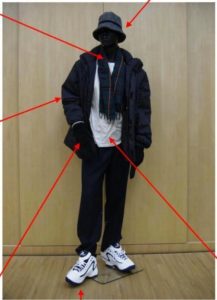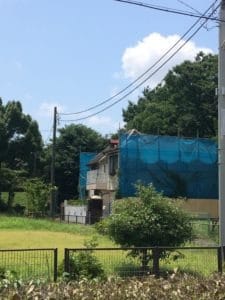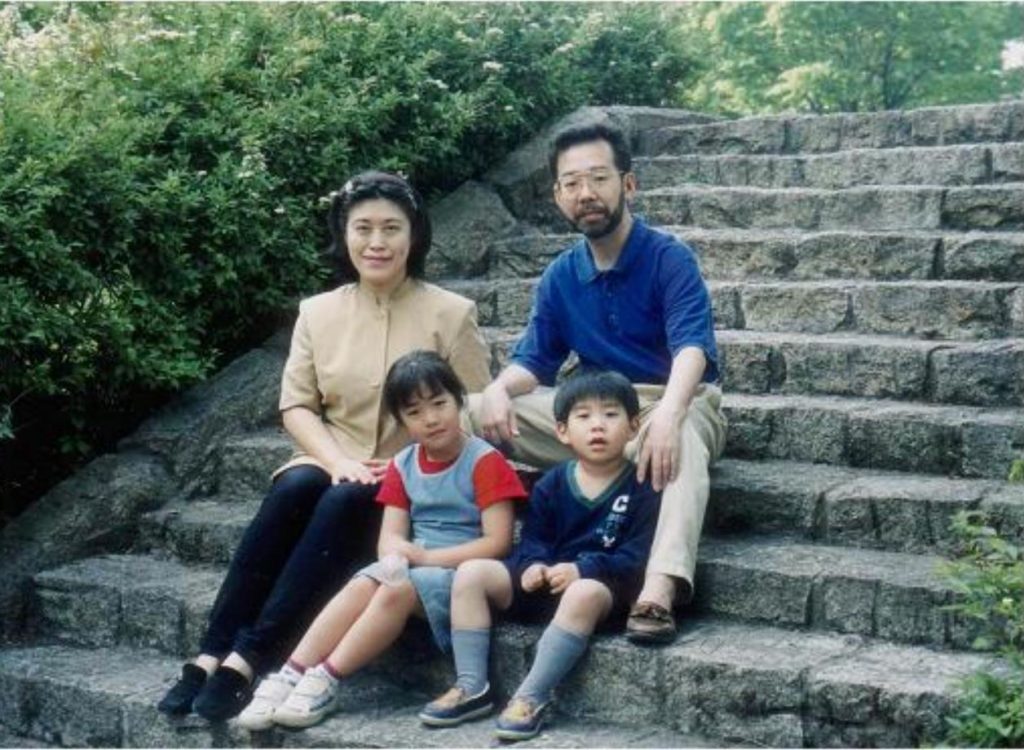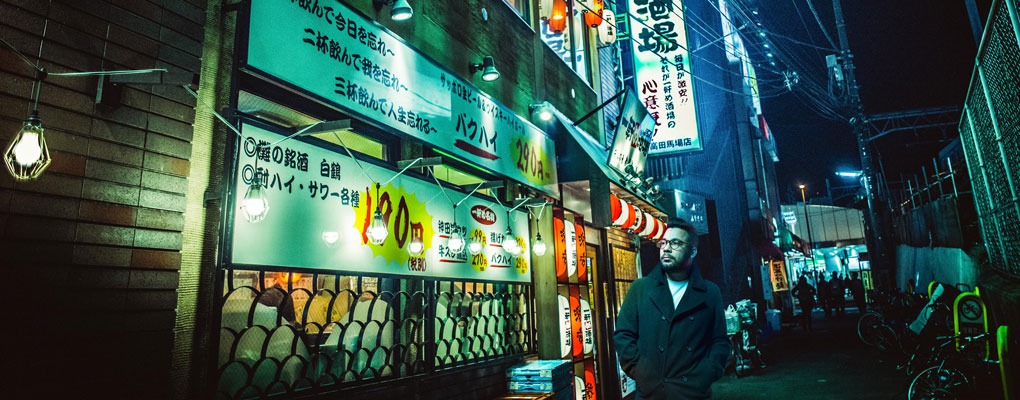Books
Blood and Ink: how murder and manga inspired Blue Light Yokohama
On the morning of 31 December, 2000, the Miyazawa family were found murdered in their house. After committing the crime, the killer used the family computer, ate their ice cream, slept the night. He left behind the murder weapon, as well as his clothes and blood – over 12,000 pieces of evidence in total – then walked off the face of the earth. The murders sparked one of the largest police investigations in Japanese history, mobilising some 246,000 investigators (the entire population of Brighton). They identified some very specific clues about the killer: he had  eaten string beans the day before. His blood was determined to be half-east Asian and half-Mediterranean. He wore Drakkar Noir aftershave. There were traces of bird droppings and leaves on his clothes. Sand grains from the Mojave Desert were found on his shoes. He also took nothing from the apartment except for a change of clothes and, for some reason, their New Year’s Eve greeting cards.
eaten string beans the day before. His blood was determined to be half-east Asian and half-Mediterranean. He wore Drakkar Noir aftershave. There were traces of bird droppings and leaves on his clothes. Sand grains from the Mojave Desert were found on his shoes. He also took nothing from the apartment except for a change of clothes and, for some reason, their New Year’s Eve greeting cards.
To this day, the killer remains at large.
As a stargazing kid growing up on the outskirts of Madrid, all I thought about was Captain Tsubasa, an anime show about a Japanese football prodigy. Back then, all the cartoons and video games my friends devoured were Japanese. Sure, they were translated, but it was evident that they came from a million miles away. And that’s precisely why they were wonderful to me. Each episode was like a glimpse into another dimension, each level a clue from a world so dreamily removed from mine. When I watched Akira, my mouth hung open wondering how something so marvellous could have been created. Then came the books, In the Miso Soup, Points and Lines, and Hardboiled Wonderland and the End of the World. As a child, I promised myself that I would go to Japan one day, the source of these wonderful stories.
In 2010, I was finally able to keep that promise when my old travel magazine sent me on an assignment to Japan. As my train hurtled towards Tokyo through rice paddies, greener than green, I felt uncertain and alone but as excited as I’d ever been. I keep on whispering to myself: I am in Japan. I went about my work, hitting the streets, making notes, taking photographs, preparing my article.
I woke the next day completely disorientated and jet lagged. I couldn’t get back to sleep, so even though the sun had not yet risen, I decided to make an early start. I drank a coffee in the empty hotel lobby and came across an old newspaper. The photograph was intriguing. A very ordinary-looking family were on a sunny day out, sitting on stone steps surrounded by green leaves. I wondered how could they be headline news. Then I realised that this family was a ten-year-old cold case. As the year 2000 ran into its final day, someone had broken into their home and slaughtered them all. The article didn’t say why, nor did it offer any motives. What was clear was that the killer was still at large. In that empty lobby, I gazed at them for a long time and asked myself: who could murder an entire family with a sashimi knife then leave in broad daylight? On a whim, I googled the Miyazawa’s address. What I didn’t know was that this throwaway little choice would change my life forever and, four years later, turn me into an author.
 Setagaya is Tokyo’s most populous ward but much of it is leafy and residential. Where the Miyazawa’s lived was no different. Not far from Soshigaya-Okura Station, in a quiet neighbourhood park, I found the family home. It was a handsome house, large by Japanese standards, framed idyllically by bushes and tall trees. It stood alone, little daisies dotted in its overgrown grass. The Sen River ran silently behind it. A streetlamp buzzed nearby. People passed me, on their way to work, on their way to school, carrying on with their lives. I pictured a detective trying to find the man who had murdered a fictional family like this, treading quietly through their fictional house, running his eyes over strange details. I stood there for a long time looking at that house next to that fictional detective. Three weeks later, I left Japan having fallen in love with it but the story of the fate of the Miyazawa family had also lodged itself within me like a sad little splinter.
Setagaya is Tokyo’s most populous ward but much of it is leafy and residential. Where the Miyazawa’s lived was no different. Not far from Soshigaya-Okura Station, in a quiet neighbourhood park, I found the family home. It was a handsome house, large by Japanese standards, framed idyllically by bushes and tall trees. It stood alone, little daisies dotted in its overgrown grass. The Sen River ran silently behind it. A streetlamp buzzed nearby. People passed me, on their way to work, on their way to school, carrying on with their lives. I pictured a detective trying to find the man who had murdered a fictional family like this, treading quietly through their fictional house, running his eyes over strange details. I stood there for a long time looking at that house next to that fictional detective. Three weeks later, I left Japan having fallen in love with it but the story of the fate of the Miyazawa family had also lodged itself within me like a sad little splinter.
Four years later, my travel magazine had folded and I was in a dead-end office job. To celebrate my 30th birthday, I decided to retrace my old route. So it was then that, in April 2014, I was staying in another hotel, jet-lagged once more. Unable to sleep, I came across another newspaper. My breath caught. I was looking down at the Miyazawas once more. It was the same photograph of the family I’d seen four years ago. They were frozen in time, still sitting on some stone steps. I remembered standing outside the house and I remembered my fictional detective. I felt the little splinter still there and I asked myself why I’d never written my detective’s story about a fictional family murder. I didn’t want to write about the Miyazawas but I did want to write about what had happened to them – about atrocity, about facelessness. By the next morning, while travelling on a bullet train to Kyoto, I began to plot out that novel.
Almost four years on from that hotel room and Blue Light Yokohama has been released across the world. The second and third Inspector Iwata novels are in the works. My life has moved forwards. But I still think about standing outside the Miyazawa’s house. I keep up with the latest web sleuth theories. I don’t give up hope that the killer will be found one day. I pray that the Miyazawa family, if it is in any place at all, has stone steps, green leaves and sunlight forever. And, last of all, I pray they can forgive me the intrusion.




1 Comment
Please note: Moderation is enabled and may delay your comment being posted. There is no need to resubmit your comment. By posting a comment you are agreeing to the website Terms of Use.